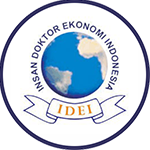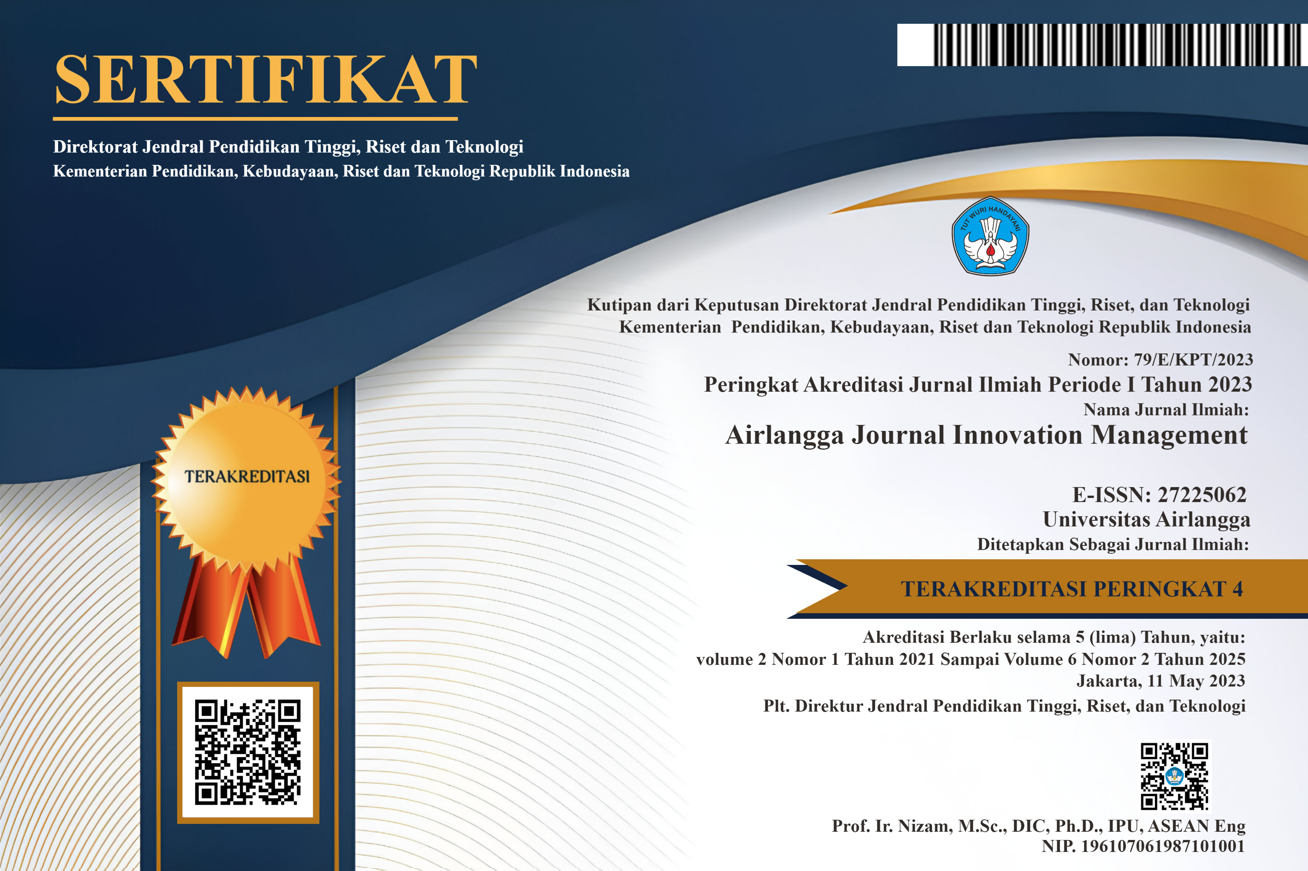Analyzing The Impact of Quality Management on Housing Users' Perceptions Using Property SERVQUAL
Unduhan
Introduction: Penelitian ini akan berfokus terhadap ilmu manajemen terutama manajemen kualitas. Background Problems: Sejarah Service Quality telah muncul pada beberapa penelitian terdahulu, namun penelitian yang membicarakan servqual property belum memberikan informasi yang komprehensif dalam literatur. Konsep manajemen kualitas akan menunjang keberhasilan dalam mengembangkan sektor perumahan dan akan memberikan akselerasi bagi pemerintah untuk meningkatkan ekonomi masyarakat. Sayangnya di banyak negara berkembang, pengelolaan perumahan untuk masyarakat cenderung belum memenuhi kualitas yang dibutuhkan karena selalu mengutamakan kuantitas. Purpose: Atas pola pikir yang tertuang dalam pendahuluan maka jelas urgensi empirik dan theoritical gap menjadi kesempatan bagi peneliti untuk memberikan tambahan referensi ilmu pengetahuan berupa konseptual manajemen kualitas persepsi pengguna perumahan menggunakan servqual property sesuai dengan dampak yang harapan. Method: Metode yang diterapkan pada penelitian ini dilakukan dengan pendekatan Kuantitatif. Play Finding: Temuan yang akan didapatkan pada penelitian ini yaitu berupa gambaran konseptual manajemen kualitas persepsi pengguna perumahan menggunakan servqual property dan bagaimana dampaknya terhadap housing characteristics serta dampak langsung bagu pengguna berupa subjective well-being. Implication: Implikasi pada penelitian ini terdiri dari dua output yaitu pertama implikasi terhadap keilmuan berupa referensi baru dari konsep manajemen kualitas dengan novelty menghubungkan antara servqual property, housing characteristics dan subjective well-being. Kedua yaitu pertimbangan strategi praktis bagi stakeholder perumahan.
Aji, R. A. S., & R A Nurlinda. (2024). The Influence of Product Quality and Service Quality on Customer Loyalty Through Customer Satisfaction. International Journal of Economics (IJEC), 3(2), 1253–1269. https://doi.org/10.55299/ijec.v3i2.1103
Alam, M. S., & Mondal, M. (2019). Assessment of sanitation service quality in urban slums of Khulna city based on SERVQUAL and AHP model: A case study of railway slum, Khulna, Bangladesh. Journal of Urban Management, 8(1), 20–27. https://doi.org/10.1016/j.jum.2018.08.002
Baharum, Z. A., & Nawawi, A. H. (2009). Assessment of Property Management Service Quality of Purpose Built Office Buildings (Vol. 2, Issue 1).
Chen, L., Zhang, W., Yang, Y., & Yu, J. (2013). Disparities in residential environment and satisfaction among urban residents in Dalian, China. Habitat International, 40, 100–108. https://doi.org/10.1016/j.habitatint.2013.03.002
Chiang, T. Y., & Perng, Y. H. (2018). A new model to improve service quality in the property management industry. International Journal of Strategic Property Management, 22(5), 436–446. https://doi.org/10.3846/ijspm.2018.5226
Chua Chow, C., & Luk, P. (2005). A strategic service quality approach using analytic hierarchy process. Managing Service Quality: An International Journal, 15(3), 278–289.
Creswell, J. W., & Creswell, J. D. (2017). Research Design: Qualitative, Quantitative, and Mixed Methods Approaches. Sage publications.
Dellby, C., Aam Slamet Rusydiana, & Indra. (2024). Understanding the Drivers of Consumer Loyalty Among Millennials Towards Halal Restaurants in Indonesia: SEM – PLS Analysis. Airlangga Journal of Innovation Management, 5(3), 379–395. https://doi.org/10.20473/ajim.v5i3.59021
Diener, E., & Seligman, M. E. P. (2004). Beyond Money Toward an Economy of Well-Being (Vol. 5, Issue 1).
Etminani-Ghasrodashti, R., Majedi, H., & Paydar, M. (2017). Assessment of Residential Satisfaction in Mehr Housing Scheme: A Case Study of Sadra New Town, Iran. Housing, Theory and Society, 34(3), 323–342. https://doi.org/10.1080/14036096.2017.1298536
Fauziah Ramadhany, S. (2024). Pengaruh Pengetahuan, label halal, sikap, Religiusitas dan Harga terhadap Minat Beli pada Kosmetik Halal Import Korea. Airlangga Journal of Innovation Management, 5(1), 126–140. https://doi.org/10.20473/ajim.v5i1.55095
Forsythe, P. (2008). Modelling customer perceived service quality in housing construction. Engineering, Construction and Architectural Management, 15(5), 485–496. https://doi.org/10.1108/09699980810902767
Goetsch, D. L., & Davis, S. B. (2014). Quality management for organizational excellence. pearson Upper Saddle River, NJ.
Hair, J., & Alamer, A. (2022). Partial Least Squares Structural Equation Modeling (PLS-SEM) in second language and education research: Guidelines using an applied example. Research Methods in Applied Linguistics, 1(3), 100027.
Heizer, J., Render, B., & Munson, C. (2017). Operations management: Sustainability and supply chain management. Prentice-Hall.
Herbers, D. J., & Mulder, C. H. (2017). Housing and subjective well-being of older adults in Europe. Journal of Housing and the Built Environment, 32(3), 533–558. https://doi.org/10.1007/s10901-016-9526-1
Jes She, T., Binti Mohd Aini, A., & Al Sadat Binti Zyed, Z. (2022). PERFORMANCE MEASUREMENT PRACTICES IN PROPERTY MANAGEMENT OF PUBLIC HOUSING MALAYSIA. In Journal of the Malaysian Institute of Planners VOLUME (Vol. 20).
Kuo, Y. C., Chou, J. S., & Sun, K. S. (2011). Elucidating how service quality constructs influence resident satisfaction with condominium management. Expert Systems with Applications, 38(5), 5755–5763. https://doi.org/10.1016/j.eswa.2010.10.057
Li, J., Li, D., Ning, X., Sun, J., & Du, H. (2019). Residential satisfaction among resettled tenants in public rental housing in Wuhan, China. Journal of Housing and the Built Environment, 34(4), 1125–1148. https://doi.org/10.1007/s10901-019-09667-x
Martin, J., Elg, M., & Gremyr, I. (2020). The Many Meanings of Quality: Towards a Definition in Support of Sustainable Operations. Total Quality Management and Business Excellence. https://doi.org/10.1080/14783363.2020.1844564
Mohit, M. A., & Azim, M. (2012). Assessment of Residential Satisfaction with Public Housing in Hulhumale’, Maldives. Procedia - Social and Behavioral Sciences, 50(July), 756–770. https://doi.org/10.1016/j.sbspro.2012.08.078
Mouratidis, K. (2020). Commute satisfaction, neighborhood satisfaction, and housing satisfaction as predictors of subjective well-being and indicators of urban livability. Travel Behaviour and Society, 21, 265–278. https://doi.org/10.1016/j.tbs.2020.07.006
Mouratidis, K., Ettema, D., & Næss, P. (2019). Urban form, travel behavior, and travel satisfaction. Transportation Research Part A: Policy and Practice, 129(September), 306–320. https://doi.org/10.1016/j.tra.2019.09.002
OECD. (2013). OECD guidelines on measuring subjective well-being. Organisation for Economic Co-operation and Development. https://doi.org/http://dx.doi.org/10.1787/9789264191655-en
Parasuraman, A., Zeithaml, V. A., & Berry, L. L. (1988). Servqual: A multiple-item scale for measuring consumer perc. Journal of Retailing, 64(1), 12.
Sarstedt, M., Ringle, C. M., & Hair, J. F. (2021). Partial least squares structural equation modeling. In Handbook of market research (pp. 587–632). Springer.
Seiler, V. L., & Reisenwitz, T. H. (2010). A review of service quality research in real estate. In Journal of Real Estate Literature (Vol. 18, Issue 2, pp. 225–238). https://doi.org/10.1080/10835547.2010.12090274
Sirgy, M. J. (2012). Social indicators research series 50. The psychology of quality of life: Hedonic well-being, life satisfaction, and eudaimonia. http://ovidsp.ovid.com/ovidweb.cgi?T=JS&PAGE=reference&D=psyc7&NEWS=N&AN=2012-19038-000
Sokhiful Jannah, S., & Indra. (2024). Analysis of Factors Influencing Purchase Intention on Halal-labeled Cosmetics in Bogor by Generation Z. Airlangga Journal of Innovation Management, 5(2), 247–259. https://doi.org/10.20473/ajim.v5i2.55460
Sugiyono, D. (2016). Metode penelitian kuantitatif dan R&D. Bandung: Alfabeta, 26–33.
Suripto, & Elita Permatasari. (2023). Analisis Tingkat Kesejahteraan Dan Determinan Kesejahteraan Rumahtangga Pengrajin Kulit Di Dusun Manding, Desa Sabdodadi, Kecamatan Bantul, Kabupaten Bantul, Provinsi Daerah Istimewa Yogyakarta. Jurnal Ekonomi : Journal of Economic.
Teng, C.-I., Huang, L.-S., Jeng, S.-P., Chou, Y.-J., & Hu, H.-H. (2012). Who may be loyal? Personality, flow experience and customer e-loyalty. International Journal of Electronic Customer Relationship Management, 6(1), 20–47.
Weidermann, S., & Anderson, J. R. (1985). A Conceptual Framework for Residential Satisfaction. In Home environments (Issue In Altman, I & Werner, C. H., (Eds.)). http://scioteca.caf.com/bitstream/handle/123456789/1091/RED2017-Eng-8ene.pdf?sequence=12&isAllowed=y%0Ahttp://dx.doi.org/10.1016/j.regsciurbeco.2008.06.005%0Ahttps://www.researchgate.net/publication/305320484_SISTEM_PEMBETUNGAN_TERPUSAT_STRATEGI_MELESTARI
Yangailo, T., & Sichinsambwe, C. (2024). ASSESSMENT OF SERVICE QUALITY DELIVERY IN RURAL DISTRICTS OF ZAMBIA. Proceedings on Engineering Sciences, 6(2), 535–550. https://doi.org/10.24874/PES06.02.011
Yoo, M., & Bai, B. (2013). Customer loyalty marketing research: A comparative approach between hospitality and business journals. International Journal of Hospitality Management, 33, 166–177.
Yusoff, W. Z. W., & Ismail, M. (2008). FM‐SERVQUAL: a new approach of service quality measurement framework in local authorities. Journal of Corporate Real Estate, 10(2), 130–144.
Zhao, C., & Wei, H. (2019). The Highest Hierarchy of Consumption: A Literature Review of Consumer Well-Being. Open Journal of Social Sciences, 07(04), 135–149. https://doi.org/10.4236/jss.2019.74012
Hak Cipta (c) 2025 Airlangga Journal of Innovation Management

Artikel ini berlisensiCreative Commons Attribution-NonCommercial-ShareAlike 4.0 International License.
- The journal allows authors to hold copyright without restrictions and retain publication rights without restrictions. The author retains the copyright and grants the first publication rights to the journal, with his work simultaneously licensed under the Creative Commons Attribution-NonCommercial-ShareAlike 4.0 International License (CC BY-NC-SA). This license allows others to share the work with acknowledgment of authorship and initial publication in this journal, provided that the work is not used for commercial purposes and that any derivative works must use the same license.
- Authors may enter into additional contractual agreements for non-exclusive distribution of the journal publication version (e.g., uploading it to an institutional repository or publishing it in book form), while still including acknowledgment of the initial publication in this journal.
- Authors are allowed and encouraged to upload their work online (e.g., in an institutional repository or personal website) before and during the submission process. This can support productive scientific exchanges as well as increase citations to published works.

AJIM by UNAIR is licensed under a Creative Commons Attribution-NonCommercial-ShareAlike 4.0 International License.





















